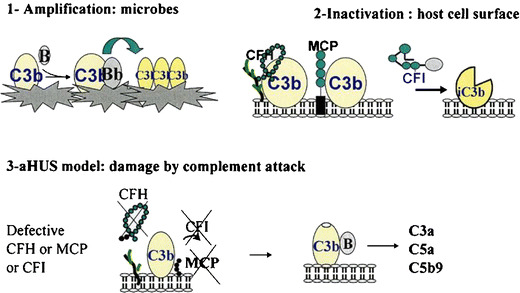Fig. 1.

Complement activation and control. aHUS is a disease resulting from inefficient protection of the surfaces of the host’s endothelial cells in the setting of complement activation. (1) Activation of complement and covalent attachment of complement C3 to the microbial surfaces. C3b binds CFB, inducing formation of the alternative C3 convertase (C3bBb) and amplification of the C3 cleavage. (2) Protection of self cell surfaces. Regulation of the cleavage of C3 is critical. Under normal conditions the formation of C3 convertase is tightly controlled by CFH, MCP, and CFI. (3) In the case of aHUS, activation is uncontrolled and C3 convertase is formed, resulting in formation of inflammatory mediators. CFH does not attach to surfaces through its heparin/anionic-binding sites, and, thus, CFB binds C3b. Degradation of C3b to iC3b is defective in the absence of CFI and its cofactors (CFH and MCP) (from [24], with permission of the authors and Wiley–Blackwell Publishing)
